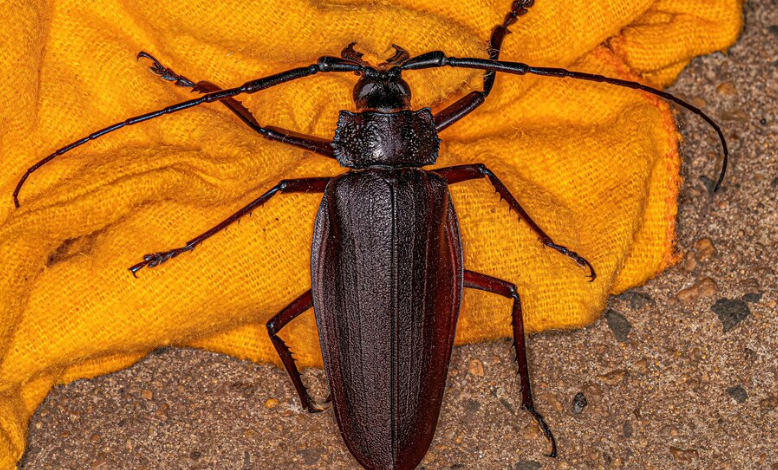Uncovering the Scientific Name of the World Largest Cockroach: Amazing Facts and Details

The Scientific Name of the World Largest Cockroach is Megaloblatta longipennis. Known for its impressive size, this cockroach has the widest wingspan of any cockroach species, reaching up to seven inches. Unlike the smaller cockroaches often found indoors, the Megaloblatta longipennis lives mainly in natural settings across Central and South America.
The scientific name of the world’s largest cockroach, Megaloblatta longipennis, helps scientists clearly identify this incredible insect. Scientific names are important because they allow people around the world to talk about the same species, no matter what language they speak. Let’s explore the amazing details about this giant cockroach, its habitat, and how it compares to other species.
What Is the Scientific Name of the World’s Largest Cockroach?
The scientific name of the world’s largest cockroach is Megaloblatta longipennis. This specific name allows scientists and researchers around the world to easily recognize this particular species, no matter their native language. Using scientific names is essential because common names can be confusing and vary across different regions. The name Megaloblatta highlights its large size, with “megalo” meaning large and “blatta” meaning cockroach in Latin.
The Megaloblatta longipennis holds the record for the largest cockroach by wingspan. This cockroach’s wings can span up to seven inches, which is much wider than that of any other cockroach species. Despite its size, it’s rarely seen by humans because it lives deep in tropical forests far from cities and homes.
This scientific name also helps in classifying this species properly. Insects like cockroaches are grouped into families, orders, and species, making it easier to study their behaviors, habitats, and ecological roles. With so many types of cockroaches worldwide, scientific names keep things clear and organized.
Where Can We Find the Megaloblatta Longipennis

The Megaloblatta longipennis, or the world’s largest cockroach, is found mostly in tropical rainforests of Central and South America. These regions provide the warm, humid conditions that are ideal for this giant insect. Countries like Ecuador, Peru, and Panama are some of the main places where these cockroaches thrive in the wild.
This giant cockroach prefers to live in areas with dense vegetation, as it provides food sources and places to hide from predators. In rainforests, the thick foliage and warm climate create a perfect environment for this species to grow and survive. They feed on decaying plants and organic matter, helping to keep the forest floor clean and balanced.
Unlike the common cockroach species that invade human homes, the Megaloblatta longipennis rarely interacts with people. It stays deep in nature, where it plays an important role in the ecosystem. Because of its size, it might seem scary, but it’s a harmless insect that contributes to the health of the forest environment.
How Big Is the World’s Largest Cockroach? All About Its Size
The world’s largest cockroach, Megaloblatta longipennis, is impressive due to its size. This cockroach can reach lengths of up to 4 inches and have wings that span over 7 inches wide, making it much larger than most other cockroach species. Its size is what makes it stand out among the thousands of cockroach types found around the world.
This species uses its large wings to glide from one place to another in search of food or shelter. While most people find the thought of a large cockroach unsettling, this insect’s size actually helps it survive in the wild. The large wings and body allow it to move quickly if it senses danger or needs to escape predators.
It’s important to remember that despite its size, the Megaloblatta longipennis is a beneficial insect. Its role in breaking down decaying plants helps keep the ecosystem healthy. The world’s largest cockroach, though big, contributes to nature in a positive way.
Why Scientists Named It Megaloblatta Longipennis
The name Megaloblatta longipennis was chosen based on two main features: its large size and its long wings. In Latin, “megalo” means big, and “blatta” refers to cockroach, so together, it represents a large cockroach. The term “longipennis” is based on its uniquely long wings, which set it apart from other species.
Scientific names like Megaloblatta longipennis make it easier for scientists to identify specific traits of the insect. Without a scientific name, describing or researching this particular cockroach would be much harder. Using Latin terms in scientific names ensures consistency, so researchers across the globe can communicate effectively about the same species.
The scientific naming system also helps in organizing species based on their physical traits and behaviors. In the case of Megaloblatta longipennis, its name tells us about its unique size and appearance, giving it a fitting title in the world of insects.
Exploring the Natural Habitat of the World’s Largest Cockroach
The natural habitat of Megaloblatta longipennis is mainly within dense tropical rainforests. These forests, located in places like Ecuador, Panama, and Peru, provide the warm and moist climate that this cockroach needs to survive. The lush greenery and rich plant life are essential for its growth and shelter.
This cockroach thrives in areas with plenty of decaying plant matter, which it feeds on. In rainforests, there’s an abundance of dead leaves, branches, and other organic material that forms a perfect food source. The thick forest cover also keeps this cockroach safe from predators, as it can easily hide among the leaves and undergrowth.
Living in the rainforest keeps the Megaloblatta longipennis away from human contact. Unlike house cockroaches, it is rarely seen near human settlements. By staying deep within the forest, this cockroach plays a key role in recycling nutrients back into the soil, helping maintain a balanced ecosystem.
How Megaloblatta Longipennis Compares to Other Cockroaches

Compared to common household cockroaches, the Megaloblatta longipennis is much larger and lives in very different conditions. Most household cockroaches are about an inch long, while the Megaloblatta longipennis can reach over 4 inches. Its wingspan is also notably larger, making it a record-holder among cockroaches.
In terms of behavior, this cockroach is more solitary and prefers outdoor environments. Household cockroaches, on the other hand, often come inside buildings to find food and shelter. While house cockroaches are pests, the Megaloblatta longipennis lives a peaceful life in the forest, far from people’s homes.
By comparing these cockroach types, we can see that the Megaloblatta longipennis is a unique species with its own role in nature. Unlike house cockroaches, it helps keep rainforests healthy and balanced.
Interesting Facts About Megaloblatta Longipennis
- Size: Known for its massive size and wide wingspan.
- Habitat: Found mainly in tropical rainforests.
- Diet: Feeds on decaying plant matter.
- Behavior: Prefers the outdoors, unlike household cockroaches.
Conclusion
In conclusion, the Megaloblatta longipennis, also called the world’s largest cockroach, is an interesting creature. Though its size might be surprising, it plays an important role in the rainforest. These cockroaches help break down decaying plants, which is essential for keeping the ecosystem healthy. Even though they look intimidating, they’re a natural part of the environment.
While the Megaloblatta longipennis may seem a bit scary due to its size, it’s harmless to humans. These cockroaches live far away from people, deep in tropical forests, so they don’t cause problems for us. Understanding creatures like this giant cockroach reminds us that all animals have a purpose, no matter how unusual they might seem.



